I’m a little late with my first “52 ancestors in 52 weeks” posting. Last week’s prompt was “same name,” and it took me a while to wrap it up. In response to the prompt, I looked at a Dutch naming tradition I learned about only in recent years and how it may have been used by my Van den Bosch ancestors.
I have tons of families in my tree who used the same names generation after generation. The Case family favored Obadiah, Separate, and Keziah. The Kreykes family liked Jan (or some version thereof). The Hendricksons often used Lars and Oliver (Haldor).
I only recently realized, however, that my Van den Bosch family in the early 20th century closely mirrored a Dutch tradition in which the eldest son is named after the father’s father (Hendrik became Henry); the eldest daughter is named after the mother’s mother (Lubbigje became Lucy); the second son is named after the mother’s father (Harman became Herman); and the second daughter is named after the father’s mother (Hendrijke became Henrietta).
Because in this case all of the grandparents were born in the Netherlands and their grandchildren born in America, the Dutch names became Americanized, even as they passed them on. Some of the grandchildren received American names and others a Dutch name that later became Americanized.
When I heard about this tradition and applied it to this family, I was interested to see that it fit so well for the first two boys and first two girls. It’s a little more complicated to figure out how the later children received their names. The third daughter was named Hermina. I don’t find that name in the family tree, though I wonder whether it was a feminized version of her maternal grandfather’s name, Harmen/Herman. When Hermina was born, it was the maternal grandfather’s turn to pass on his name, but a second boy had not yet been born who could be named Herman. A couple years after Hermina’s birth, a boy was born who was indeed named Herman. It took me a while to consider this connection for Hermina because she was always called “Mina” by everyone I knew.
The source of names for the younger children remains somewhat of a mystery, although one could certainly speculate that “Gertie” may have received a form of her father’s name Gerrit or perhaps the name of two of her great-grandmothers who were named Gerritje. Margaret, who died at age 5, may have received a form of her mother’s name Merrigje, although her mother’s own name was Americanized to “Mary.” Daughter Stella may have received an Americanized form of the name of her great-grandmother “Stintje.” The biggest mystery is the name of the daughter Winifred, for which I am unable to find a source in the family tree, although it certainly is a pretty name. It almost seems they ran out of ancestors with names that had not yet been passed on to their children. Perhaps there is a namesake I’ve yet to discover.
Unfortunately, this is all speculation because I never really discussed this with my grandmother. I’d love to know. The Van den Bosch siblings appear below in adulthood. Henrietta, second from right in the back row, was my grandmother. It seems likely that she was named after her paternal grandmother, Hendrikje Top Van den Bosch, who died in the Netherlands in 1901.

Two of my sources for the Dutch naming tradition were FamilySearch and Dutch genealogist Yvette Hoitink via Dutch Genealogy.
Here in February, I’m late to the party in blogging about “52 ancestors in 52 weeks.” Still, I’m giving it a try, even though I can’t promise to respond to every weekly prompt (in fact, it is unlikely I will carve out the time to do so). It will be a helpful tool, though, in filling those gaps between ancestral birthdays and exciting new research discoveries. 🙂

 I recently learned of a series of books that feature a forensic genealogist solving family history mysteries. How could I not snatch up the first in the series and read it?
I recently learned of a series of books that feature a forensic genealogist solving family history mysteries. How could I not snatch up the first in the series and read it? I won’t provide any spoilers here, but this series is set in England … relatively present day. It’s fun to follow a character in a novel who logs into Ancestry and visits local archives. And as is to be expected, the answer to one question always leads to a brand new question. The main character gets into some pickles, and I question some of his methods … but it is fiction. I’ve read only the first book, but the series has eight. I bought the first three as a single volume in the kindle version for the pretty economical price of $9.99 and will read all three.
I won’t provide any spoilers here, but this series is set in England … relatively present day. It’s fun to follow a character in a novel who logs into Ancestry and visits local archives. And as is to be expected, the answer to one question always leads to a brand new question. The main character gets into some pickles, and I question some of his methods … but it is fiction. I’ve read only the first book, but the series has eight. I bought the first three as a single volume in the kindle version for the pretty economical price of $9.99 and will read all three.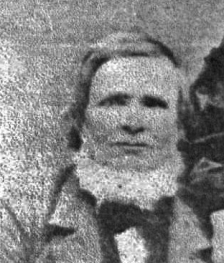 Obadiah
Obadiah Besides, Obadiah is probably the most frequent “common ancestor” among my DNA matches on Ancestry (example at right). When a distant DNA cousin turns up on my dad’s side, our connection can frequently be traced back to Obadiah. This is not uncommon for ancestors born in America when the country was still relatively young and families were still relatively large. Obadiah was the great grandfather of my maternal grandmother, Dorothy Clausen Hendrickson.
Besides, Obadiah is probably the most frequent “common ancestor” among my DNA matches on Ancestry (example at right). When a distant DNA cousin turns up on my dad’s side, our connection can frequently be traced back to Obadiah. This is not uncommon for ancestors born in America when the country was still relatively young and families were still relatively large. Obadiah was the great grandfather of my maternal grandmother, Dorothy Clausen Hendrickson.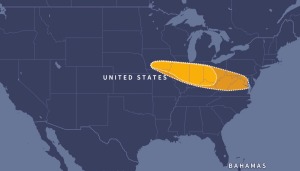 It’s always challenging to write a profile of a person you’ve never met … and that nobody you’ve known in your lifetime has ever met. However, the more research I do, the more real Obadiah becomes to me. His family’s migration story runs through the generations … culminating in Iowa, where most of his children were born, where he is buried, and where a new chapter of family history takes root. The story starts putting real people to my late father’s DNA results that place him with an American westward migratory community (see above). Obadiah was one of the key figures in this movement for my family.
It’s always challenging to write a profile of a person you’ve never met … and that nobody you’ve known in your lifetime has ever met. However, the more research I do, the more real Obadiah becomes to me. His family’s migration story runs through the generations … culminating in Iowa, where most of his children were born, where he is buried, and where a new chapter of family history takes root. The story starts putting real people to my late father’s DNA results that place him with an American westward migratory community (see above). Obadiah was one of the key figures in this movement for my family. A few years ago, I made my first trip to eastern Iowa and visited the little McClure Cemetery in Charlotte, Iowa, where Obadiah and Louisa (Louisiana) are buried. With them in that cemetery were a few ancestors related through other lines. The gravestones were very old and mostly unadorned — a few were even broken — but Obadiah and Louisa had a symbol on their shared grave marker that was fairly common for the era — pointing skyward,
A few years ago, I made my first trip to eastern Iowa and visited the little McClure Cemetery in Charlotte, Iowa, where Obadiah and Louisa (Louisiana) are buried. With them in that cemetery were a few ancestors related through other lines. The gravestones were very old and mostly unadorned — a few were even broken — but Obadiah and Louisa had a symbol on their shared grave marker that was fairly common for the era — pointing skyward, 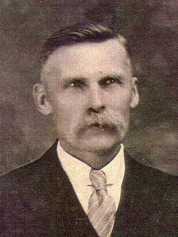 My great-grandfather was born in the Netherlands 147 years ago today.
My great-grandfather was born in the Netherlands 147 years ago today.
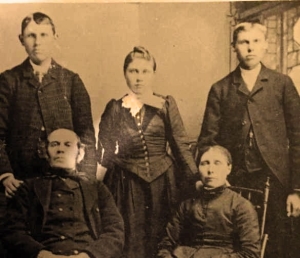 Letters that Arie’s father wrote from Iowa to family and friends back in the Netherlands offer only a few snapshots of young Arie. In one letter, his father writes that Arie has been ill, and in another letter he says that Arie and his siblings are using their earnings to help pay for land on which their parents have built a house. The letters indicate that Arie is contented in America. He
Letters that Arie’s father wrote from Iowa to family and friends back in the Netherlands offer only a few snapshots of young Arie. In one letter, his father writes that Arie has been ill, and in another letter he says that Arie and his siblings are using their earnings to help pay for land on which their parents have built a house. The letters indicate that Arie is contented in America. He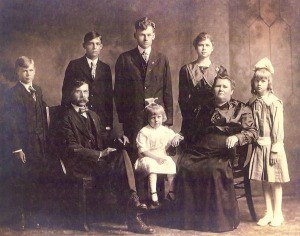 Arie and Mattie raised their children in the Christian Reformed Church, the denomination of Arie’s father, and we learn in the 1911 Hospers Tribune that Arie attended, with Rev. Van der Heide, the denominational classis in Sioux Center, Iowa, as a representative of Hospers.
Arie and Mattie raised their children in the Christian Reformed Church, the denomination of Arie’s father, and we learn in the 1911 Hospers Tribune that Arie attended, with Rev. Van der Heide, the denominational classis in Sioux Center, Iowa, as a representative of Hospers.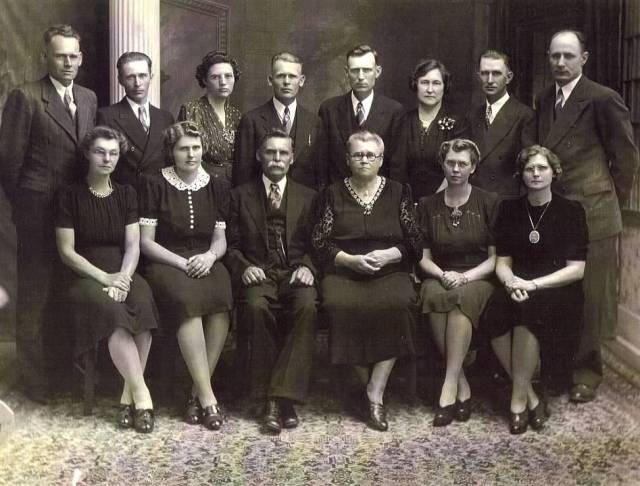
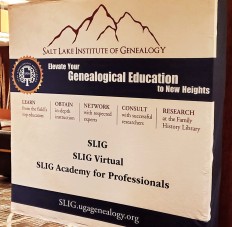 So … last week I attended the Salt Lake Institute of Genealogy (SLIG) for the first time. I’d been wanting to attend an institute for a while, but timing was always an issue, so with some hesitation, I signed up for SLIG this year. I’d gotten fairly familiar with Salt Lake after a couple of visits to RootsTech, but wanting something that went a little deeper than a broadly themed conference, I opted for SLIG. I sighed a little in exasperation that it was so soon after the holidays, when all I was really craving was some routine. But having committed myself in advance, I went.
So … last week I attended the Salt Lake Institute of Genealogy (SLIG) for the first time. I’d been wanting to attend an institute for a while, but timing was always an issue, so with some hesitation, I signed up for SLIG this year. I’d gotten fairly familiar with Salt Lake after a couple of visits to RootsTech, but wanting something that went a little deeper than a broadly themed conference, I opted for SLIG. I sighed a little in exasperation that it was so soon after the holidays, when all I was really craving was some routine. But having committed myself in advance, I went.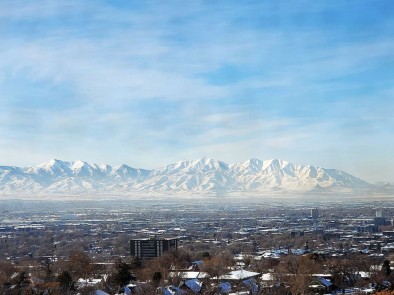 One observation I’ve made is that committed genealogists are some of the smartest people I’ve met … every bit as bright as my classmates were at Georgetown Law School. I took the Legal Concepts course with Judy Russell at SLIG, and the historical legal research to which we were exposed, which included a trip to the University of Utah law library, was probably more challenging than a lot of the more contemporary research I did as a law student. I enjoyed learning about the various sources available for legal research in the 19th century and earlier … and gaining an understanding of how useful they can be in genealogy (also, the view from the law library was lovely). Understanding the legal framework in which our ancestors lived helps us to know both what kind of records to look for and what those records might mean. I think this course helped me more with the former. It also drove home to me the incredible access to legal resources I have in Austin — from the University of Texas law library, to the state law library, to the state archives — and made me realize I should make more use of them. Because pretty much none of my ancestry is grounded in Texas, I’ve tended to overlook the potential access to non-Texas resources I might find at these places.
One observation I’ve made is that committed genealogists are some of the smartest people I’ve met … every bit as bright as my classmates were at Georgetown Law School. I took the Legal Concepts course with Judy Russell at SLIG, and the historical legal research to which we were exposed, which included a trip to the University of Utah law library, was probably more challenging than a lot of the more contemporary research I did as a law student. I enjoyed learning about the various sources available for legal research in the 19th century and earlier … and gaining an understanding of how useful they can be in genealogy (also, the view from the law library was lovely). Understanding the legal framework in which our ancestors lived helps us to know both what kind of records to look for and what those records might mean. I think this course helped me more with the former. It also drove home to me the incredible access to legal resources I have in Austin — from the University of Texas law library, to the state law library, to the state archives — and made me realize I should make more use of them. Because pretty much none of my ancestry is grounded in Texas, I’ve tended to overlook the potential access to non-Texas resources I might find at these places.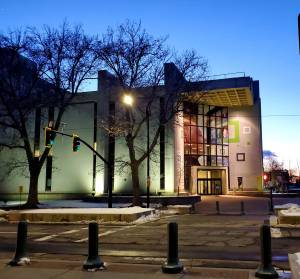 I did finally manage to get to the Family History Library for a short while on the last day. However, as is my routine in Salt Lake, I did not carve out enough time for library work. The Saturday following SLIG was dedicated to that in the schedule, but I needed (and wanted) to get home. Unfortunately, I also got sick in the final days and arrived home not feeling well. Apparently, there is something known as the “SLIG crud,” and I can now call myself a veteran of that after my first year. I wore a facemask in class on the last day and on the plane home, to keep others from sharing in my illness. I rarely get sick, but when I do it’s often because I’ve been on a crowded flight or at a conference with lots of people, so in some ways, this wasn’t that surprising, despite my nightly downing of EmergenC starting the second day I was there.
I did finally manage to get to the Family History Library for a short while on the last day. However, as is my routine in Salt Lake, I did not carve out enough time for library work. The Saturday following SLIG was dedicated to that in the schedule, but I needed (and wanted) to get home. Unfortunately, I also got sick in the final days and arrived home not feeling well. Apparently, there is something known as the “SLIG crud,” and I can now call myself a veteran of that after my first year. I wore a facemask in class on the last day and on the plane home, to keep others from sharing in my illness. I rarely get sick, but when I do it’s often because I’ve been on a crowded flight or at a conference with lots of people, so in some ways, this wasn’t that surprising, despite my nightly downing of EmergenC starting the second day I was there. Despite the illness, which is lingering, I’m glad to have gone. It was challenging, but I like a good challenge. The illness will pass. And it was good to meet so many enthusiastic and committed genealogists who share my excitement about this work. Most of them have been at it for longer than I have and have engaged in more serious training, so it was enlightening for me to have a chance to talk with some of them. Also, it snowed almost every day, unsurprisingly, which was a refreshing change from Austin. It was worth it to stay out of a routine for a bit longer. Now, though, I’m planning to be home for a good, long while. I might even get some research done.
Despite the illness, which is lingering, I’m glad to have gone. It was challenging, but I like a good challenge. The illness will pass. And it was good to meet so many enthusiastic and committed genealogists who share my excitement about this work. Most of them have been at it for longer than I have and have engaged in more serious training, so it was enlightening for me to have a chance to talk with some of them. Also, it snowed almost every day, unsurprisingly, which was a refreshing change from Austin. It was worth it to stay out of a routine for a bit longer. Now, though, I’m planning to be home for a good, long while. I might even get some research done.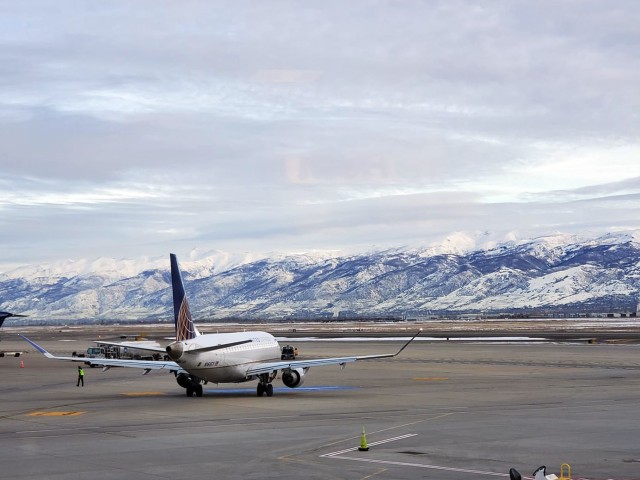
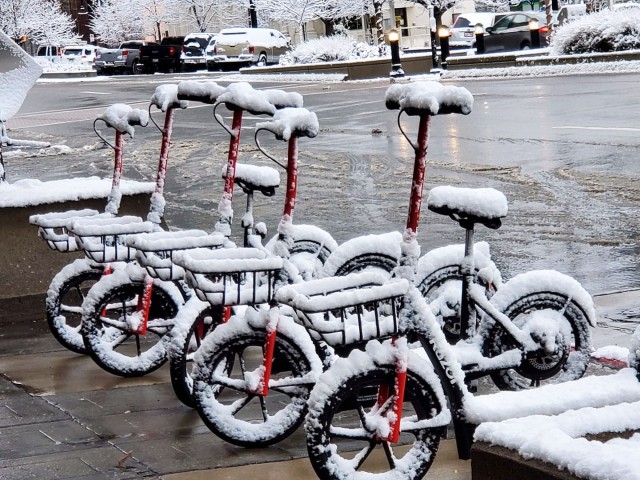
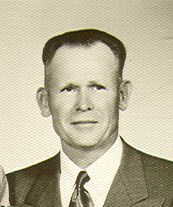 Joe Kreykes was my maternal grandfather. He was born on this day in 1907 in Baker Township, O’Brien County — a rural area in the heart of the fertile farmlands of northwest Iowa, between the towns of Granville and Hospers. He was the son of Arend Jan (“Arie”) Kreykes and Metje (“Mattie”) Reitsema.
Joe Kreykes was my maternal grandfather. He was born on this day in 1907 in Baker Township, O’Brien County — a rural area in the heart of the fertile farmlands of northwest Iowa, between the towns of Granville and Hospers. He was the son of Arend Jan (“Arie”) Kreykes and Metje (“Mattie”) Reitsema.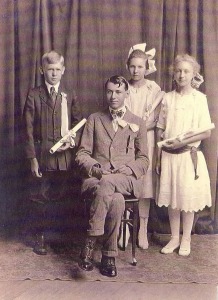 I do not know much about my grandfather’s school days except that he allegedly graduated first in his high school class of two students. At right is a picture of him, the lone boy behind the teacher, with another small class that looks to me like 6th or 8th grade if I were guessing. Even the teacher looks young.
I do not know much about my grandfather’s school days except that he allegedly graduated first in his high school class of two students. At right is a picture of him, the lone boy behind the teacher, with another small class that looks to me like 6th or 8th grade if I were guessing. Even the teacher looks young.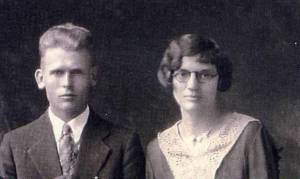 Grandpa married my grandmother Hattie in 1930 in Boyden, Iowa. Hattie was also the daughter of Dutch immigrants, and together, they had four children — two boys and two girls. My mother was their second child and eldest daughter. Based on both my memories of him and what I’ve heard from others, Grandpa was a hard-working man who believed in self-reliance. He delivered cream for the creamery, farmed, and eventually owned a hardware store with my grandmother in Orange City, the county seat of Sioux County, Iowa.
Grandpa married my grandmother Hattie in 1930 in Boyden, Iowa. Hattie was also the daughter of Dutch immigrants, and together, they had four children — two boys and two girls. My mother was their second child and eldest daughter. Based on both my memories of him and what I’ve heard from others, Grandpa was a hard-working man who believed in self-reliance. He delivered cream for the creamery, farmed, and eventually owned a hardware store with my grandmother in Orange City, the county seat of Sioux County, Iowa.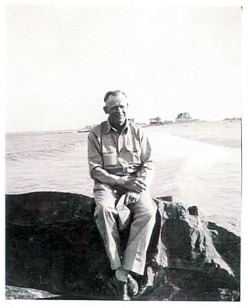 Grandpa worked hard but also enjoyed himself and took his family on vacations to New York, Texas, Colorado, and other places … more frequently, to closer places like the lakes of Minnesota or the Black Hills of South Dakota.
Grandpa worked hard but also enjoyed himself and took his family on vacations to New York, Texas, Colorado, and other places … more frequently, to closer places like the lakes of Minnesota or the Black Hills of South Dakota.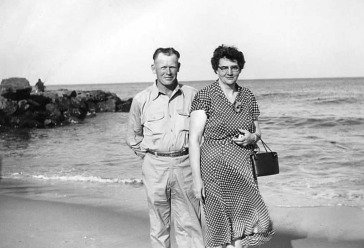
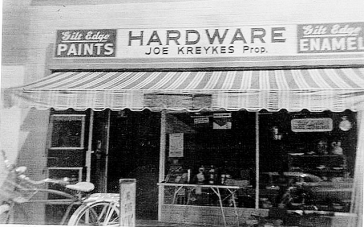
 In the 1970s, as a gift from their adult children, my grandparents made a trip to the Netherlands to visit relatives and see the towns from which their parents had originated, including Rijssen, Overijssel, the home of my grandfather’s Kreykes ancestors. The picture at right is from the street
In the 1970s, as a gift from their adult children, my grandparents made a trip to the Netherlands to visit relatives and see the towns from which their parents had originated, including Rijssen, Overijssel, the home of my grandfather’s Kreykes ancestors. The picture at right is from the street 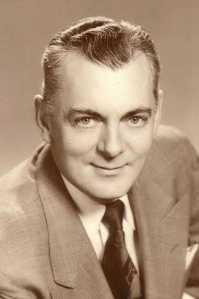 My late grandfather was born on the first day of 1903 in a small town in Central Iowa. It was a Thursday and, for context, apparently the same day President Theodore Roosevelt and his wife Edith unveiled new renovations to the White House.
My late grandfather was born on the first day of 1903 in a small town in Central Iowa. It was a Thursday and, for context, apparently the same day President Theodore Roosevelt and his wife Edith unveiled new renovations to the White House.
 Grandpa graduated from high school in Kamrar, then attended Grinnell College in Iowa, leaving there to go to work after three years of study. His college years and his decision to leave are something I wish I had discussed with him more. He married my grandmother, Dorothy, a high school English teacher, in 1927, in Sioux City, Iowa, at which time Grandpa’s stated occupation was “clerk.” He would work in sales in one form or another for much of his working life. Although baptized and married in the Lutheran church, he was a Methodist for most of his adult life and a member of Grace Methodist of Sioux City, perhaps an influence from his mother.
Grandpa graduated from high school in Kamrar, then attended Grinnell College in Iowa, leaving there to go to work after three years of study. His college years and his decision to leave are something I wish I had discussed with him more. He married my grandmother, Dorothy, a high school English teacher, in 1927, in Sioux City, Iowa, at which time Grandpa’s stated occupation was “clerk.” He would work in sales in one form or another for much of his working life. Although baptized and married in the Lutheran church, he was a Methodist for most of his adult life and a member of Grace Methodist of Sioux City, perhaps an influence from his mother.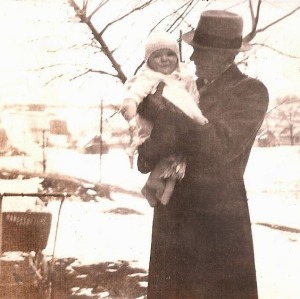 He had one son, my father, whom he and my grandmother raised in the Morningside neighborhood of Sioux City, as well as four grandchildren, and two great-grandchildren. He retired with my grandmother in southern California in the 1970s, where they both enjoyed the sunshine.
He had one son, my father, whom he and my grandmother raised in the Morningside neighborhood of Sioux City, as well as four grandchildren, and two great-grandchildren. He retired with my grandmother in southern California in the 1970s, where they both enjoyed the sunshine.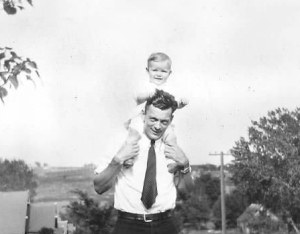 He was a gentleman, my grandfather … a man of his era from the Midwest. He rarely talked about himself … at least to me. I wish he had, though, and I wish I had asked more questions. Grandpa worked hard but enjoyed life, too.
He was a gentleman, my grandfather … a man of his era from the Midwest. He rarely talked about himself … at least to me. I wish he had, though, and I wish I had asked more questions. Grandpa worked hard but enjoyed life, too.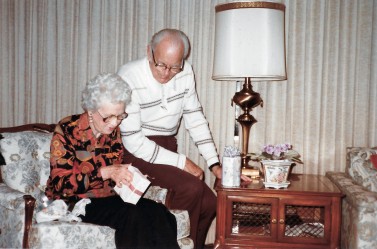 Grandpa also loved to golf, and he pursued this into his 90s before suffering a stroke in 2000 at the age of 97. He had survived my grandmother by nine years, and I know he missed her. I reflected on the two of them in an
Grandpa also loved to golf, and he pursued this into his 90s before suffering a stroke in 2000 at the age of 97. He had survived my grandmother by nine years, and I know he missed her. I reflected on the two of them in an 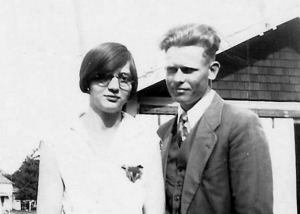 Today is the 89th anniversary of the marriage of my late maternal grandparents, Joe and Hattie Kreykes, in Boyden, Iowa.
Today is the 89th anniversary of the marriage of my late maternal grandparents, Joe and Hattie Kreykes, in Boyden, Iowa.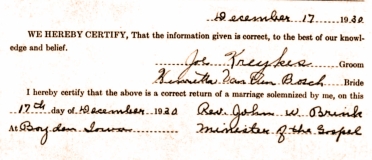 It was the first marriage for both, and their fathers served and signed as witnesses. The marriage was officiated by Rev. John W. Brink, “Minister of the Gospel.” A little intuition and online research indicate that Rev. Brink was likely from First Reformed Church in Boyden.
It was the first marriage for both, and their fathers served and signed as witnesses. The marriage was officiated by Rev. John W. Brink, “Minister of the Gospel.” A little intuition and online research indicate that Rev. Brink was likely from First Reformed Church in Boyden.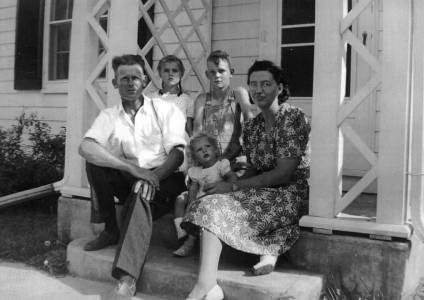 My grandparents would eventually have four children, with their first, a son, born in 1932. My mother was their second child, born two years later, and the family ultimately grew to two boys and two girls, all shown at right. My grandfather worked at various times delivering cream for the creamery, farming, and running a hardware store in town.
My grandparents would eventually have four children, with their first, a son, born in 1932. My mother was their second child, born two years later, and the family ultimately grew to two boys and two girls, all shown at right. My grandfather worked at various times delivering cream for the creamery, farming, and running a hardware store in town. 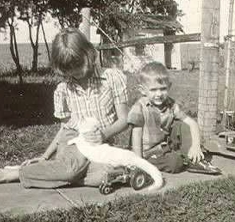
 By the time I knew my grandparents, they were living in Orange City, Iowa, where they ran a hardware store and eventually retired. We’d go to the First Reformed Church on Sunday, visit friends and relatives, work in Grandma’s garden, go for ice cream, and occasionally visit the store. I’ve written before about my pleasant memories of those visits. My grandparents had high expectations for behavior, which may at times have seemed unattainable, but I don’t remember them being anything but loving toward us and I’m grateful for them still today. When I was in high school, we visited for their 50th anniversary celebration.
By the time I knew my grandparents, they were living in Orange City, Iowa, where they ran a hardware store and eventually retired. We’d go to the First Reformed Church on Sunday, visit friends and relatives, work in Grandma’s garden, go for ice cream, and occasionally visit the store. I’ve written before about my pleasant memories of those visits. My grandparents had high expectations for behavior, which may at times have seemed unattainable, but I don’t remember them being anything but loving toward us and I’m grateful for them still today. When I was in high school, we visited for their 50th anniversary celebration.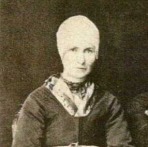 She was my mother’s mother’s mother’s mother. Lubbigje (“Lucy”) Van der Maaten, my 2nd great grandmother, was born on this day in 1840, in Oldebroek, a village in the province of Gelderland, in the Netherlands, to Frank Janszoon and Gerrigje Klijn.
She was my mother’s mother’s mother’s mother. Lubbigje (“Lucy”) Van der Maaten, my 2nd great grandmother, was born on this day in 1840, in Oldebroek, a village in the province of Gelderland, in the Netherlands, to Frank Janszoon and Gerrigje Klijn. Lucy was already married to Harmen (Herman) Van der Maaten when she arrived in America, most likely in the early to mid 1880s. She was reportedly his second wife and married him in Oldebroek in 1866 when she was about 25 years old. Most of their children were born in the Netherlands, including my great grandmother Mary, who was born about 1880. It is likely that a son born in 1881, Jan Willem, died in the Netherlands before the age of 2. Only their youngest daughter Stella was born in America, in 1885. At that time, the family lived in Sioux County, Iowa, a northwest part of the state that was already home to many Dutch immigrants and their descendants.
Lucy was already married to Harmen (Herman) Van der Maaten when she arrived in America, most likely in the early to mid 1880s. She was reportedly his second wife and married him in Oldebroek in 1866 when she was about 25 years old. Most of their children were born in the Netherlands, including my great grandmother Mary, who was born about 1880. It is likely that a son born in 1881, Jan Willem, died in the Netherlands before the age of 2. Only their youngest daughter Stella was born in America, in 1885. At that time, the family lived in Sioux County, Iowa, a northwest part of the state that was already home to many Dutch immigrants and their descendants.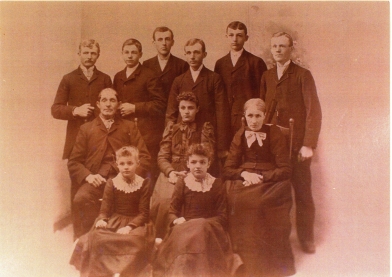
 Lucy died in Boyden, Iowa, on May 4, 1897, at the relatively young age of 57, unfortunately not living to see the dawn of the 20th century. She is buried in the cemetery in Middleburg, not far from Boyden. The Americanized form of Lubbijge’s name, “Lucy,” did not get passed on to her own daughters but would be used again by the family for at least two subsequent generations, with my great-grandmother Mary giving the name to her eldest daughter … my great-aunt Lucy. None of the women named Lucy were my direct ancestors, however.
Lucy died in Boyden, Iowa, on May 4, 1897, at the relatively young age of 57, unfortunately not living to see the dawn of the 20th century. She is buried in the cemetery in Middleburg, not far from Boyden. The Americanized form of Lubbijge’s name, “Lucy,” did not get passed on to her own daughters but would be used again by the family for at least two subsequent generations, with my great-grandmother Mary giving the name to her eldest daughter … my great-aunt Lucy. None of the women named Lucy were my direct ancestors, however.
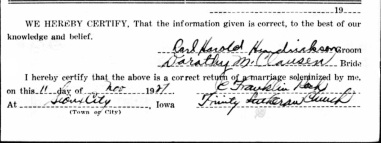 Grandpa grew up on a farm in Kamrar, Iowa, and Grandma grew up in the nearby small town of Duncombe. Grandpa attended Grinnell College for a few years before apparently leaving to go to work. Grandma graduated from college, then taught English for a few years. He was 24 and she was 23 when they married, and his job at the time of their marriage was “clerk.”
Grandpa grew up on a farm in Kamrar, Iowa, and Grandma grew up in the nearby small town of Duncombe. Grandpa attended Grinnell College for a few years before apparently leaving to go to work. Grandma graduated from college, then taught English for a few years. He was 24 and she was 23 when they married, and his job at the time of their marriage was “clerk.”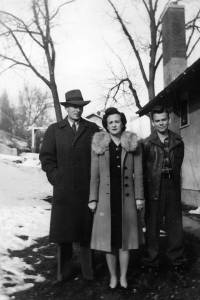 They raised my father in the Morningside neighborhood of Sioux City, Iowa, where they lived for decades, with the exception of a brief sojourn in the town of Cherokee. They belonged to the Methodist Church. Dad once told me that Grandpa was offered a demanding position in Chicago at some point, but he turned it down, thanking them but telling them he was a “family man” and wished to stay where he was.
They raised my father in the Morningside neighborhood of Sioux City, Iowa, where they lived for decades, with the exception of a brief sojourn in the town of Cherokee. They belonged to the Methodist Church. Dad once told me that Grandpa was offered a demanding position in Chicago at some point, but he turned it down, thanking them but telling them he was a “family man” and wished to stay where he was.